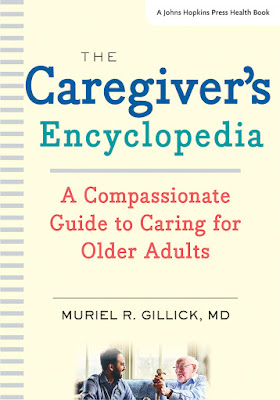As a geriatric and palliative care physician, I have provided medical care to many patients in their homes. They are typically very sick: some of them are frail, some suffer from dementia, a number are approaching the end of life. They have spent time in doctors’ offices and x-ray suites and in emergency rooms, they have been hospitalized, and they have had more than their share of operations and procedures. Most of them are at a point in their lives where want to stay at home for treatment. But because of their own physical or mental limitations, they cannot participate extensively in their own medical care. They do not have the mobility to get to a pharmacy to fill prescriptions, they do not see well enough to draw up their own insulin in a syringe, and they do not have the dexterity to change the bandage on a skin ulcer. They depend on a family member or, in some cases, a hired aide, to help them. It is for these patients and the family members who take care of them that I decided to write a book. It would be directed principally at caregivers, at the unpaid, unsung, and unsupported millions who are the backbone of care for frail older people.
I have met many of my patients’ family caregivers. They are caring, conscientious people who want to do the right thing for their mother or father, sibling or spouse. But they aren’t comfortable administering intravenous medications or giving injections because they worry they might make a mistake, with potentially serious consequences. They want the best medical care for their relative, and if that means bringing them to the hospital every time their shortness of breath gets worse or they have chest pain, that’s what they will do, even if their family member pleads with them to let them stay home. Caregivers would feel guilty if they did anything else because they don’t feel knowledgeable enough to adjust medication doses or oxygen flow rates on their own or to suggest such a course of action to the physician. They haven’t gotten the training necessary to troubleshoot when the medical equipment they are expected to use misbehaves. As a result, many of the oldest and frailest patients are repeatedly hospitalized. The hospitalization commonly leaves them weaker, more confused and more debilitated than they were before admission. Some of them spend months going first to the hospital, then to rehab, then back to the hospital, only to die, perhaps before ever returning to the comforts of home. Not the path that they wanted.
I discovered that by working closely with family caregivers, by providing them with the knowledge and support they need, this cycle can be interrupted. It’s a multi-step process that begins with a review of the patient’s overall medical condition. It turns out that often either the patient, the caregiver, or both have serious misconceptions about the nature of the patient’s illnesses, how they will evolve over time, and how they are likely to affect the patient’s well-being. Then we talk about what is most important to the patient. Is it to live as long as possible, no matter what the cost in pain, suffering, or institutionalization? Is it to remain as comfortable as possible? Or is it to stay at home and remain independent? Usually, patients want to live as long as possible and be comfortable and be independent at home. The reality is that life is full of trade-offs, and medical care for frail adults is no exception. Based on a realistic understanding of the patient’s general health and a frank conversation about the goals of medical care, we can develop strategies for addressing the medical problems the patient is most likely to develop. If she has chronic lung disease, for example, we can be fairly certain she will periodically develop worsening shortness of breath. When that happens, should the caregiver bring her relative to the office? To the emergency room? Or could she try modifying the amount of oxygen her family member is getting, perhaps supplemented by antibiotics, consulting with a member of the medical team by phone?
Key to the success of this approach is the relationship between patient, caregiver, and physician. Critical as well is the willingness of the physician to partner with patients and their caregivers. But its effectiveness also depends on the caregiver having basic knowledge about the patient’s medical condition and strategies for addressing problems as they arise. I believed that a book that guides families along the way could help overcome some of the obstacles to patients getting the kind of care they want as they age. And so, what would become The Caregiver’s Encyclopedia: A Compassionate Guide to Caring for Older Adults was conceived.
I started the book by discussing how to navigate through medical institutions such as the hospital, the physician’s office, and the rehab facility. Then I decided to add a section about the most common chronic conditions such as heart failure, high cholesterol, and high blood pressure. Next, I added a section on management of acute symptoms: since patients typically say “I’m short of breath” and not “I’m having an exacerbation of congestive heart failure,” I organized this part by symptom. Then I realized I could demonstrate how the caregiver’s response to an acute medical symptom such as nausea or dizziness might vary depending on the goals of care, so I modified the chapters accordingly. The result is a comprehensive guide to medical care for frail older people. I hope that families will view it as a companion to take with them as they proceed along the caregiving journey. It can be a difficult journey, but it can also be rewarding and enjoyable. Caregivers just need the right tools and a friendly guide to assist them.

No comments:
Post a Comment